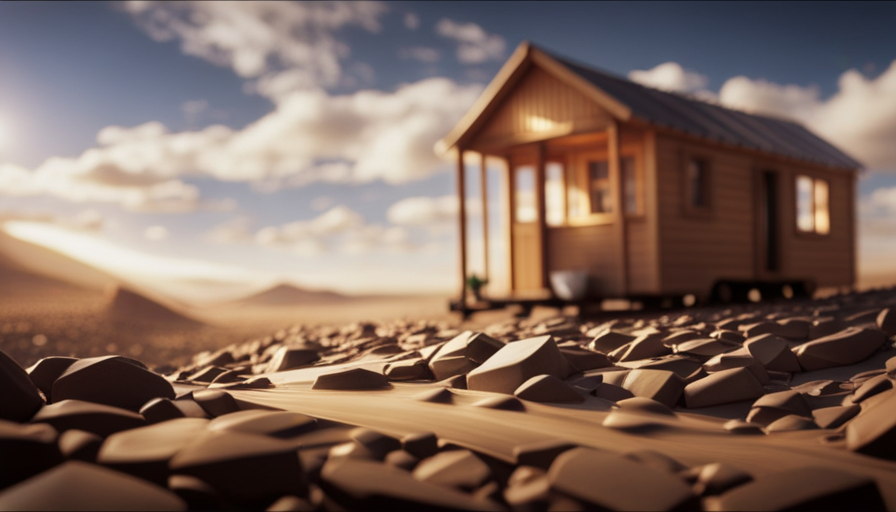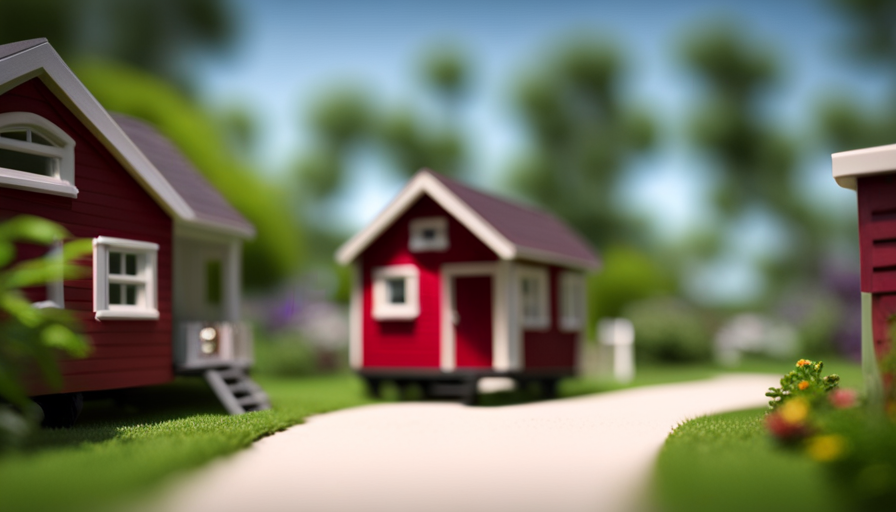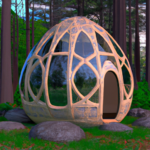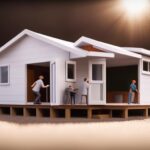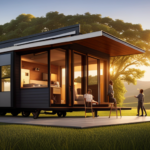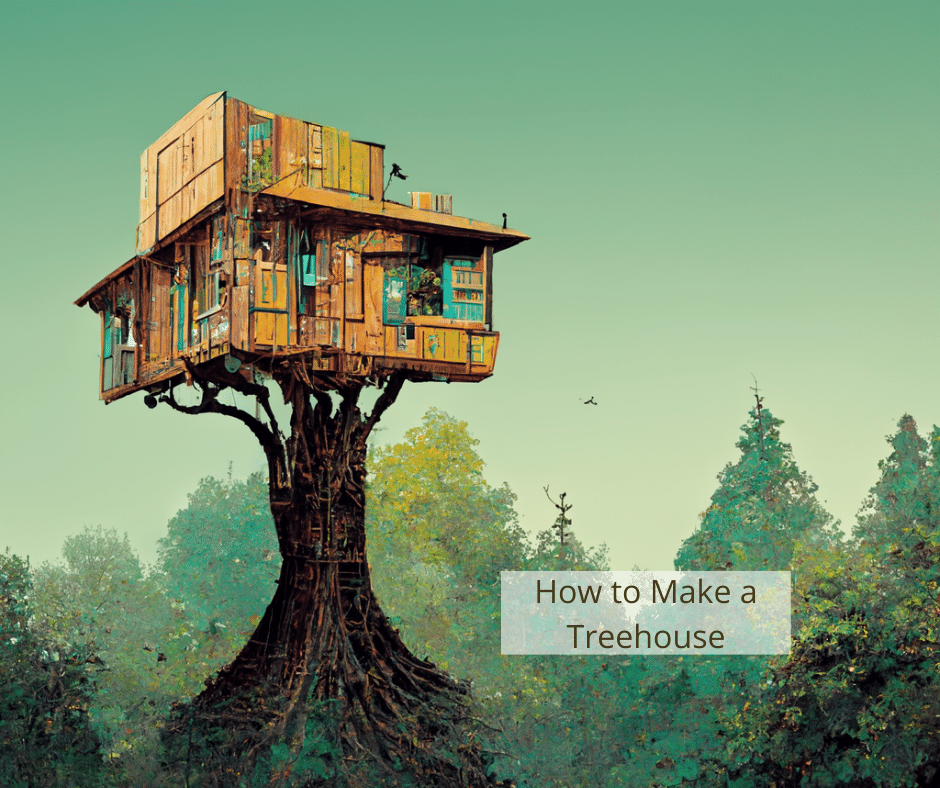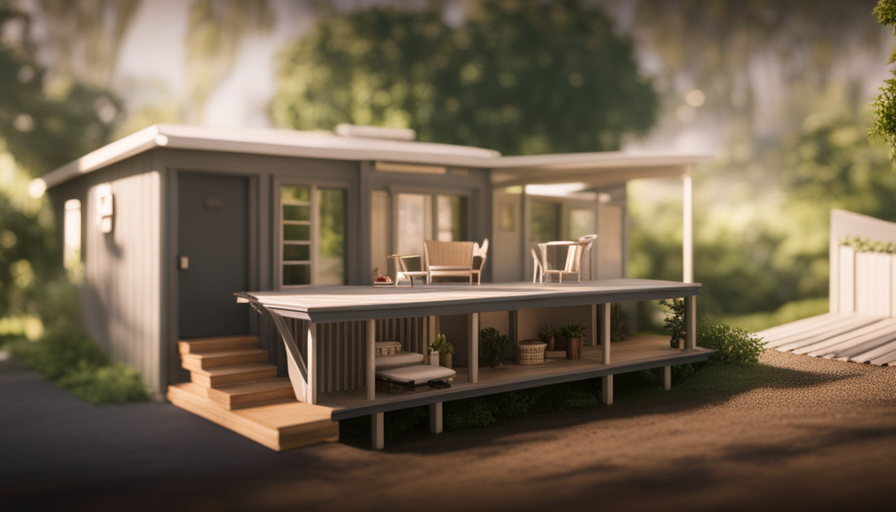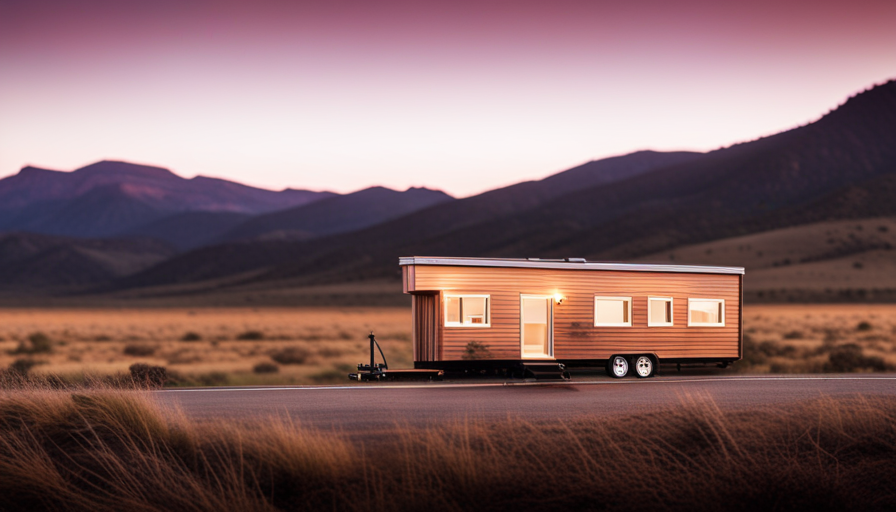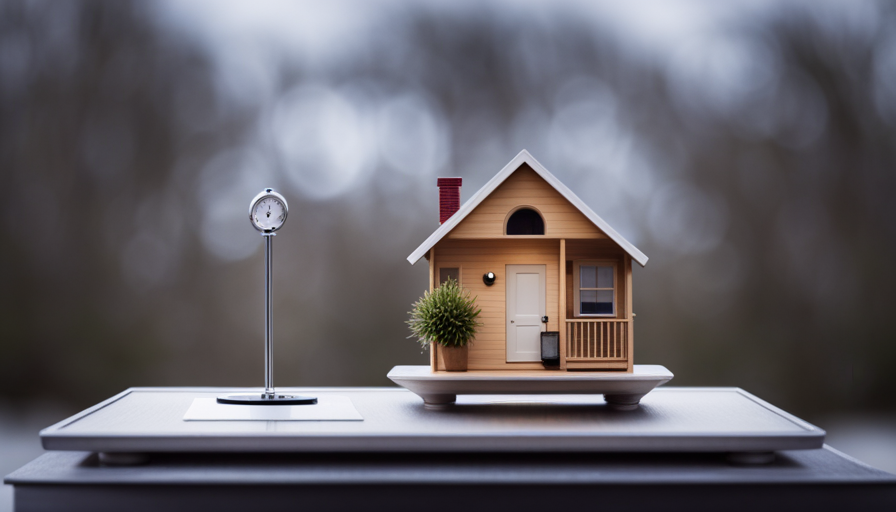Living in a small house offers a unique experience. When you step inside, you are embraced by a space that promotes minimalism and efficiency. But despite the appeal of simple living, a common question arises: what is the level of discomfort or inconvenience in a tiny house?
In this article, I will delve into the challenges and factors that contribute to the bumpiness of a tiny house, as well as provide tips on how to minimize those bumps. From designing a comfortable and stable interior to mastering the art of driving and towing, I will cover it all.
So, whether you are a tiny house enthusiast or someone considering this unique lifestyle, join me on this journey as we explore the ups and downs of living in a tiny house.
Key Takeaways
- Factors such as road conditions, terrain, construction quality, size, and weight can all contribute to the bumpiness of a tiny house.
- Proper maintenance, secure installation of fixtures, and the use of heavy-duty brackets, bolts, and screws can help minimize vibrations and bumps during transportation.
- Following driving techniques and maintenance tips, such as checking tire pressure, inspecting hitch and connections, and driving at a moderate speed, can result in a smoother ride.
- Embracing the tiny house lifestyle involves adapting to the bumps, embracing imperfections, and shifting towards simplicity and adaptability.
Understanding the Challenges of Living in a Tiny House
Living in a tiny house comes with its fair share of challenges, from finding creative storage solutions to managing limited living space. Understanding the limitations, practicality, and adaptability of tiny house living is crucial for anyone considering this lifestyle.
The practicality of living in a tiny house requires careful planning and organization. Every inch of space must be utilized efficiently, with multi-functional furniture and clever storage solutions. Additionally, adaptability is key as one must learn to live with less and embrace minimalism.
Exploring the psychological and emotional impact of living in a small space is also important. The confined living quarters can lead to feelings of claustrophobia and isolation, especially for those used to more spacious environments. However, it can also foster a sense of coziness and intimacy. The close proximity to everything within the tiny house can create a stronger connection to one’s belongings and environment.
Transitioning to the subsequent section about factors that contribute to the bumpiness of a tiny house, it is important to consider how these challenges may affect the overall comfort and stability of the living space.
Factors That Contribute to the Bumpiness of a Tiny House
When it comes to the bumpiness of a tiny house, there are several factors that contribute to the overall experience.
Firstly, road conditions and terrain play a significant role in how smooth or bumpy the ride will be. Uneven surfaces, potholes, and gravel roads can all contribute to a rougher journey.
Secondly, the quality of construction and materials used in building the tiny house can affect its stability and ability to absorb shocks. A well-built tiny house with proper insulation and sturdy construction will likely provide a smoother ride.
Lastly, the size and weight of the tiny house can also impact its bumpiness. A heavier tiny house may be more stable and less prone to bouncing, while a larger one may be more susceptible to movement.
Road Conditions and Terrain
Navigating the twists and turns of rough roads, you’ll feel the jolts and bumps of the tiny house’s journey. Road conditions and terrain play a significant role in determining how bumpy the ride will be. Here are three factors that contribute to the emotional response of the audience:
-
Road maintenance: Poorly maintained roads with potholes and uneven surfaces can cause the tiny house to bounce and shake vigorously. This can lead to discomfort and even damage to the furniture inside.
-
Impact on furniture: The constant vibrations and shocks experienced during the journey can have a detrimental effect on the furniture within the tiny house. Loose screws, broken hinges, and damaged upholstery are common consequences of a bumpy ride.
-
Uneven terrain: Steep inclines, sharp turns, and uneven terrain can further amplify the bumpiness of the journey. The tiny house may sway from side to side, causing occupants to feel unstable and uneasy.
Considering these factors, it’s vital to ensure the quality of construction and materials used in the tiny house to withstand the challenges of a bumpy ride.
Quality of Construction and Materials
The durability and resilience of the materials used in construction are crucial in ensuring a smooth and comfortable journey for occupants of the compact dwelling. When it comes to constructing a tiny house, special attention must be given to the construction techniques and durability standards employed.
The use of high-quality materials, such as reinforced steel frames and sturdy insulation, can greatly enhance the structural integrity of the tiny house. Additionally, advanced construction techniques like interlocking joints and reinforced corners can help to minimize any potential vibrations or movements during transportation.
By adhering to strict durability standards and utilizing innovative construction methods, the tiny house can better withstand the challenges presented by bumpy road conditions and rough terrains.
Transitioning into the subsequent section about the ‘size and weight of the tiny house’, it is important to consider how these factors can also impact the overall stability and comfort of the dwelling.
Size and Weight of the Tiny House
With careful consideration of its size and weight, the compact dwelling can be optimally designed for stability and comfort during transportation. Size considerations play a crucial role in determining how bumpy a tiny house will be on the road. A larger tiny house may be more prone to swaying and bouncing, while a smaller one can offer better control and stability. Additionally, weight distribution within the tiny house is essential to minimize bumps. By evenly distributing the weight, particularly heavy items, such as appliances and furniture, the tiny house can achieve a more balanced and smoother ride. To further explore the importance of size and weight in minimizing bumps, refer to the table below.
| Size Considerations | Weight Distribution |
|---|---|
| Compact dimensions | Evenly distributed weight |
| Optimal weight-to-size ratio | Balancing heavy items |
| Efficient use of space | Strategic placement of furniture |
Considering these factors, it is vital to address size and weight when designing a tiny house to ensure a smooth and comfortable journey. This attention to detail will help minimize the bumps and enhance the overall transportation experience.
Tips for Minimizing the Bumps in Your Tiny House
To minimize bumps in your tiny house, it’s essential to consider the placement of your furniture and the materials used for insulation.
Minimizing vibrations is crucial to prevent structural damage and maintain the stability of your tiny house. When it comes to furniture placement, make sure to secure larger pieces such as sofas and beds to the walls or floor using brackets or straps. This will prevent them from shifting and causing unnecessary movement during transportation. Additionally, opt for lightweight furniture that’s specifically designed for mobile living spaces, as it’ll be less likely to contribute to bumps and vibrations.
In terms of insulation materials, consider using materials that are flexible and can absorb vibrations, such as closed-cell spray foam or mineral wool. These materials can help reduce the impact of bumps and vibrations on the structure of your tiny house. It’s also important to properly seal any gaps or cracks in the walls, floors, and ceiling to prevent air leakage and further minimize vibrations.
By taking these precautions with furniture placement and insulation materials, you can greatly minimize the bumps and vibrations experienced in your tiny house. This’ll contribute to a more comfortable and stable interior, ensuring a pleasant living experience.
Designing a Comfortable and Stable Interior
Creating a cozy and rock-solid interior is key to achieving the ultimate comfort in your compact living space. When designing a comfortable interior for your tiny house, it’s important to consider both the design and construction aspects.
Here are three essential elements to incorporate for a comfortable design and stable construction:
-
Efficient Layout: Optimize the use of space by carefully planning the layout. Consider the placement of furniture, appliances, and storage solutions to ensure easy movement and functionality. Utilize multifunctional furniture and built-in storage to maximize space utilization.
-
Solid Foundation: A solid foundation is crucial for stability. Use high-quality materials for the flooring and ensure proper insulation to minimize heat loss and improve comfort. Consider adding additional support beams or reinforcements to strengthen the structure and reduce any potential for movement or shifting.
-
Secure Fixtures: Install fixtures securely to prevent them from becoming loose or unstable during travel. Use heavy-duty brackets, bolts, and screws to secure furniture, shelves, and other fixtures to the walls and floor. This will help minimize any potential movement or rattling during transportation.
By incorporating these elements into your tiny house design, you can create a comfortable and stable interior that’ll withstand the bumps of travel. Transitioning to the next section about ‘driving and towing tips for a smoother ride’, it’s important to ensure a secure and stable interior before hitting the road.
Driving and Towing Tips for a Smoother Ride
When you’re on the road, it’s important to know some tips for driving and towing to ensure a smoother ride in your compact living space. To make your journey as comfortable as possible, it’s crucial to employ proper driving techniques and follow essential maintenance tips. Here are some recommendations to help you navigate the roads with ease:
| Driving Techniques | Maintenance Tips |
|---|---|
| Check your tire pressure | Ensure your brakes are in good condition |
| Drive at a moderate speed | Regularly inspect your hitch and connections |
| Take turns slowly and smoothly | Keep your tiny house well-maintained |
| Avoid sudden braking and acceleration | Secure loose items inside your tiny house |
| Be mindful of road conditions | Keep an eye on your tiny house’s weight distribution |
By implementing these driving techniques and maintenance tips, you can significantly minimize the impact of bumps and vibrations on your tiny house. Remember, a smooth ride not only provides comfort but also helps protect your belongings and the structural integrity of your home. Adjusting to the bumps: embracing the tiny house lifestyle is the next step in your journey towards an enjoyable and fulfilling experience on the road.
Adjusting to the Bumps: Embracing the Tiny House Lifestyle
Embrace the adventure of living on the road in your compact home by adjusting to the rhythmic dance of the winding highways. Adjusting to the bumps and twists of the road is an integral part of the tiny house lifestyle. As a minimalist, you quickly learn the art of adapting to your surroundings and finding comfort in simplicity.
The financial benefits of tiny living are undeniable, but they come with the trade-off of a more dynamic living experience. Living in a tiny house requires a mindset shift towards embracing imperfections and finding joy in the journey. The bumpy ride can be seen as a metaphor for life itself – full of ups and downs, twists and turns. It teaches you to be flexible, resilient, and adaptable.
When it comes to adjusting to the bumps, there are a few practical tips that can make your journey smoother. Ensuring that your tiny house is properly secured and balanced is crucial. Investing in quality shock absorbers and a suspension system can greatly reduce the impact of bumps on your home. Additionally, organizing and securing your belongings inside the house can prevent unnecessary movement and damage.
Adjusting to the bumps is not just about the physical aspect of living on the road, but also about embracing the mindset of minimalism. Learning to let go of material possessions and focusing on experiences and relationships brings a sense of freedom and fulfillment. The financial benefits of tiny living can provide the opportunity to explore new places, meet new people, and create lasting memories.
So, embrace the bumps, embrace the adventure, and adjust to the rhythm of the road. The tiny house lifestyle offers a unique opportunity to simplify your life, save money, and create a life full of meaningful experiences.
Frequently Asked Questions
Can a tiny house be as comfortable as a traditional home?
Living in a tiny house can be as comfortable as living in a traditional home, but it’s important to consider certain factors. When comparing tiny houses to RVs, both can provide comfort, but tiny houses offer more space and amenities.
The psychological impact of living in a tiny house versus a traditional home can vary from person to person. Some may find the simplicity and minimalism of a tiny house to be liberating, while others may miss the space and familiarity of a traditional home.
What are some common challenges faced when living in a tiny house?
Living in a tiny house poses several common challenges due to space limitations. One such challenge is the constant need for organization and decluttering to maximize the available space.
Another challenge is the limited privacy, as the close proximity of rooms can make it difficult to find a quiet and secluded area.
Additionally, limited storage can be a constant struggle, requiring innovative solutions to efficiently store belongings.
These challenges require careful planning and creative problem-solving to ensure a comfortable living experience.
Are there any specific factors that contribute to the bumpy ride of a tiny house?
Factors affecting the bumpy ride of a tiny house include road conditions, suspension system, and weight distribution. To minimize bumps and vibrations, techniques such as installing a robust suspension system with shock absorbers and leaf springs can help absorb impacts.
Additionally, reducing the overall weight of the tiny house can decrease the impact of bumps. Properly securing and balancing furniture and appliances inside the house also contribute to a smoother ride.
How can I minimize the bumps and vibrations in my tiny house?
To minimize bumps and reduce vibrations in my tiny house, I can employ several strategies.
First, I should ensure a solid foundation by using sturdy materials and proper leveling techniques.
Additionally, installing shock-absorbing systems such as rubber pads or dampers can help absorb and dissipate vibrations.
I should also consider using insulation materials with good sound and vibration dampening properties.
Lastly, regular maintenance of the house’s structure and components will help prevent and address any potential sources of bumps and vibrations.
Are there any specific design features or techniques that can help make the interior of a tiny house more stable and comfortable?
Design techniques and stability techniques can greatly improve the comfort and stability of a tiny house. One interesting statistic reveals that adding additional weight to the structure can help minimize vibrations and bumps. By incorporating heavier materials, such as concrete or brick, into the foundation and walls, the tiny house becomes more stable and resistant to movement.
Additionally, using advanced insulation and soundproofing techniques can further enhance the overall stability and comfort of the interior space.
Conclusion
In conclusion, living in a tiny house may come with its fair share of challenges, including the potential for a bumpy ride. However, with careful design considerations and proper driving techniques, these bumps can be minimized.
By focusing on creating a comfortable and stable interior, and following driving and towing tips, you can ensure a smoother journey. While some may argue that the bumps in a tiny house are unavoidable, it’s important to remember that embracing the tiny house lifestyle is about finding creative solutions and adapting to the unique experiences that come with it.
Hi, I’m Emma. I’m the Editor in Chief of Tiny House 43, a blog all about tiny houses. While tree houses are often associated with childhood, they can be the perfect adult retreat. They offer a cozy space to relax and unwind, surrounded by nature. And since they’re typically built on stilts or raised platforms, they offer stunning views that traditional homes simply can’t match. If you’re looking for a unique and romantic getaway, a tree house tiny house might just be the perfect option.
